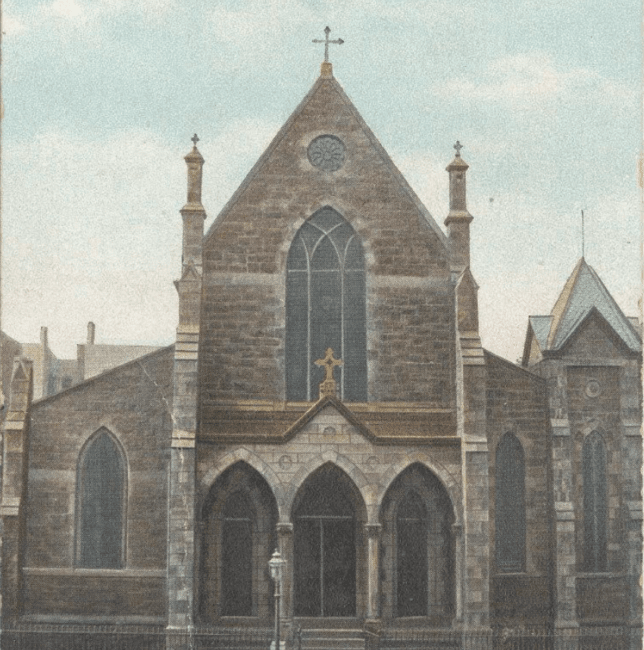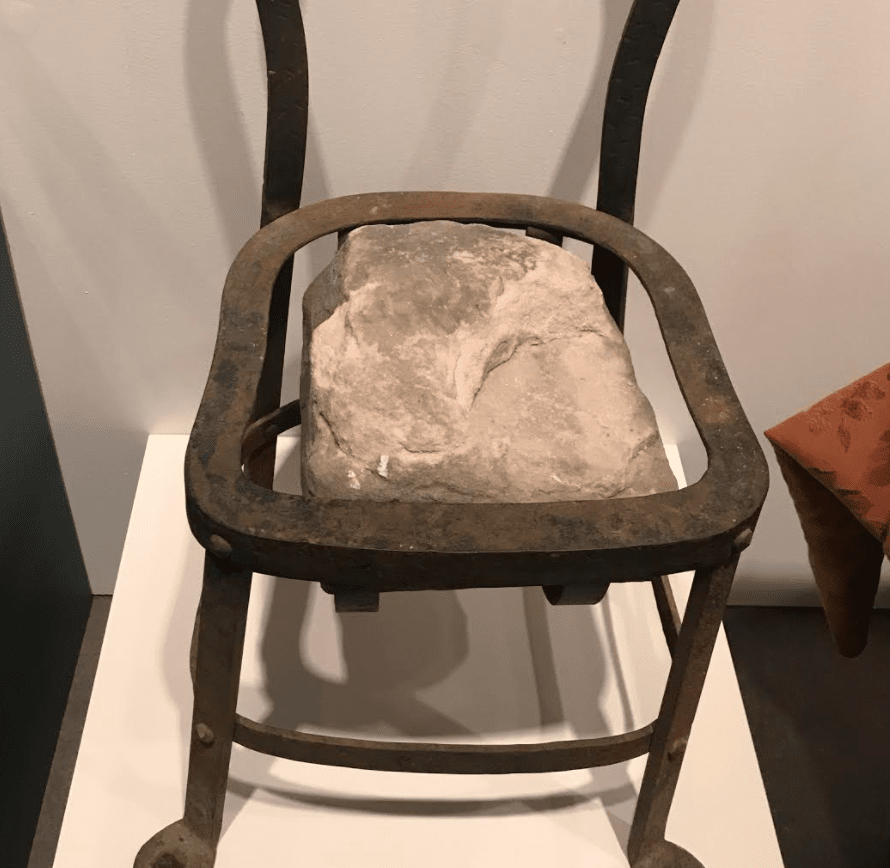This week marks a somber anniversary in the history of Hoboken. On May 23, 1921, 5,112 coffins arrived in the city’s port containing the bodies of American soldiers, sailors, marines, and nurses who had died fighting in Europe in the Great War, now known as World War I). President Warren G. Harding was there to mark the occasion and noted:
“We shall not forget, no matter whether they lie amid the sweetness and the bloom of the homeland or sleep in the soil they crimsoned. Our mindfulness, our gratitude, our reverence shall be in the preserved Republic and maintained liberties and the supreme justice for which they died.”
Hoboken had served as the main port of embarkation and debarkation for American troops in the First World War, and now became the location through which the American war dead were brought back into the country. This ceremony was not the last memorialization of their sacrifice. The Hoboken Historical Museum shares more about this somber anniversary.
The “Warrior Shrine”
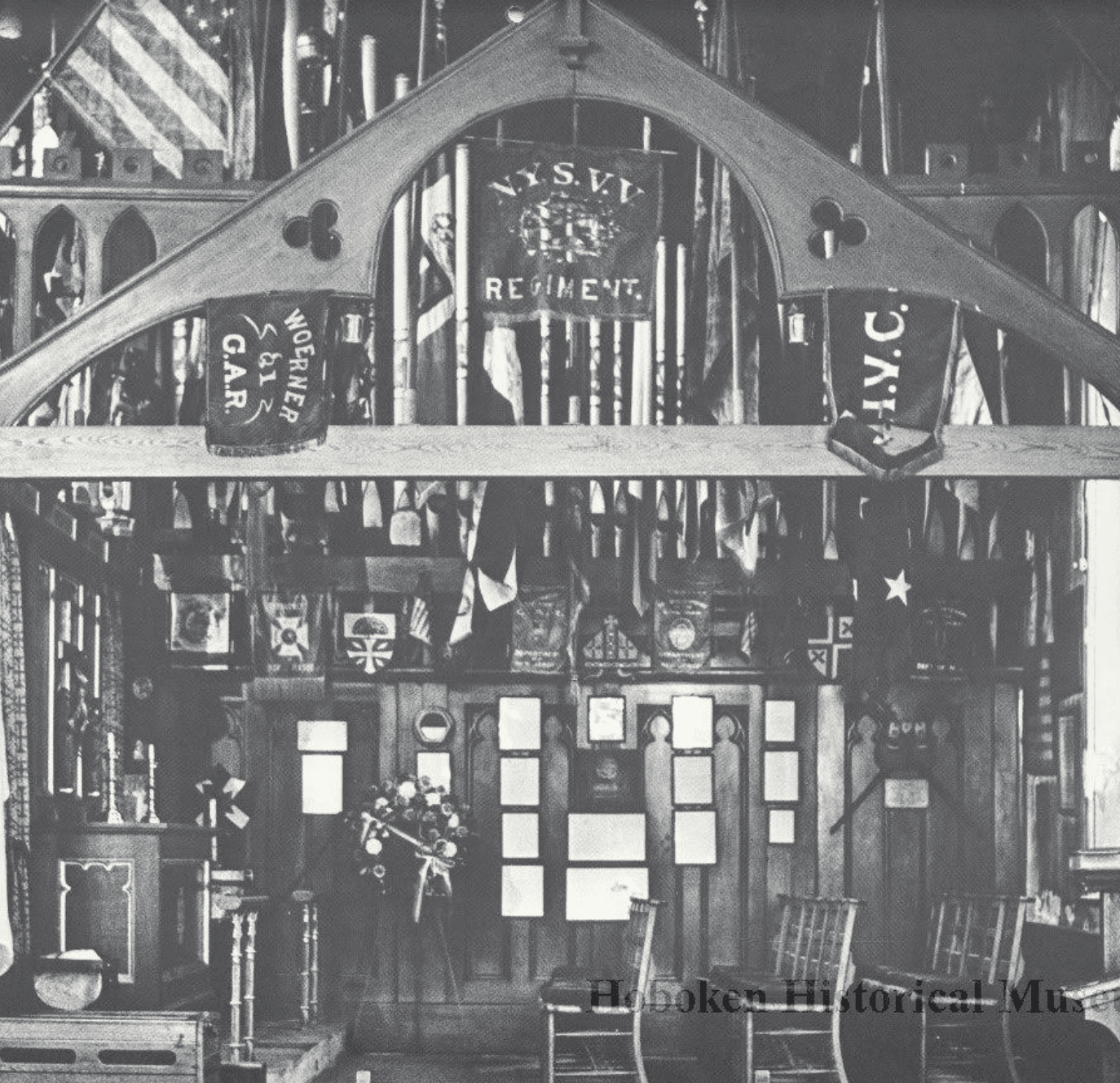
^ An interior photo of the shrine
Over the last century, Hoboken has commemorated its connection to the First World War with various memorials and anniversary events. However, the city’s greatest memorial had until quite recently been completely forgotten.
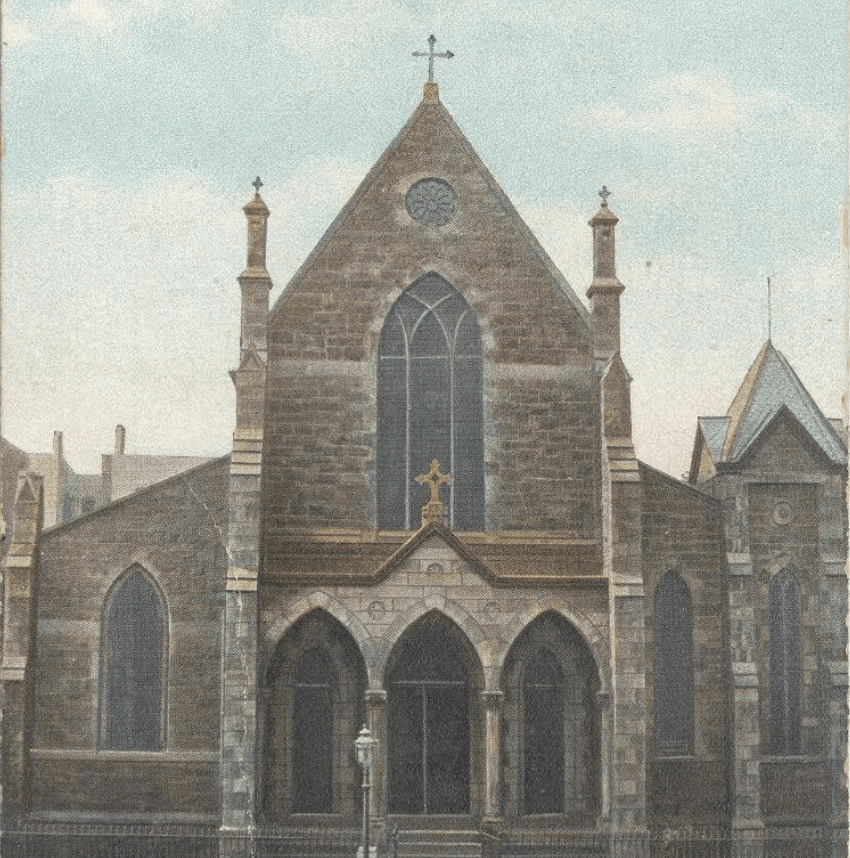
In 1931, with the war still very fresh in people’s minds, the parish of St. Paul’s Episcopal Church at 820 Hudson Street (now a condo building called The Abbey) decided that they needed to fill the need for a place of reflection to remember the war dead. The rector at that time, the Rev. Frank C. Armstrong, had served as a chaplain in the American Expeditionary Forces in World War One and had been wounded in action.
Read More: Schnackenberg’s Luncheonette in Hoboken, According to Betty Silvani
The memorial he created became known as “The Warrior Shrine” and contained an astonishing assortment of letters from princes and prime ministers, medieval relics, flags from World War One, a Russian imperial bronze star, and so much more. One letter still survives from the British Prime Minister Lloyd George who wrote:
“I welcome the spirit which led you to dedicate in your church a shrine to the memory of the Warriors of all the nations.” He also said that he hoped the shrine would “stand as a warning of the misery and futility of war.”
An International Destination
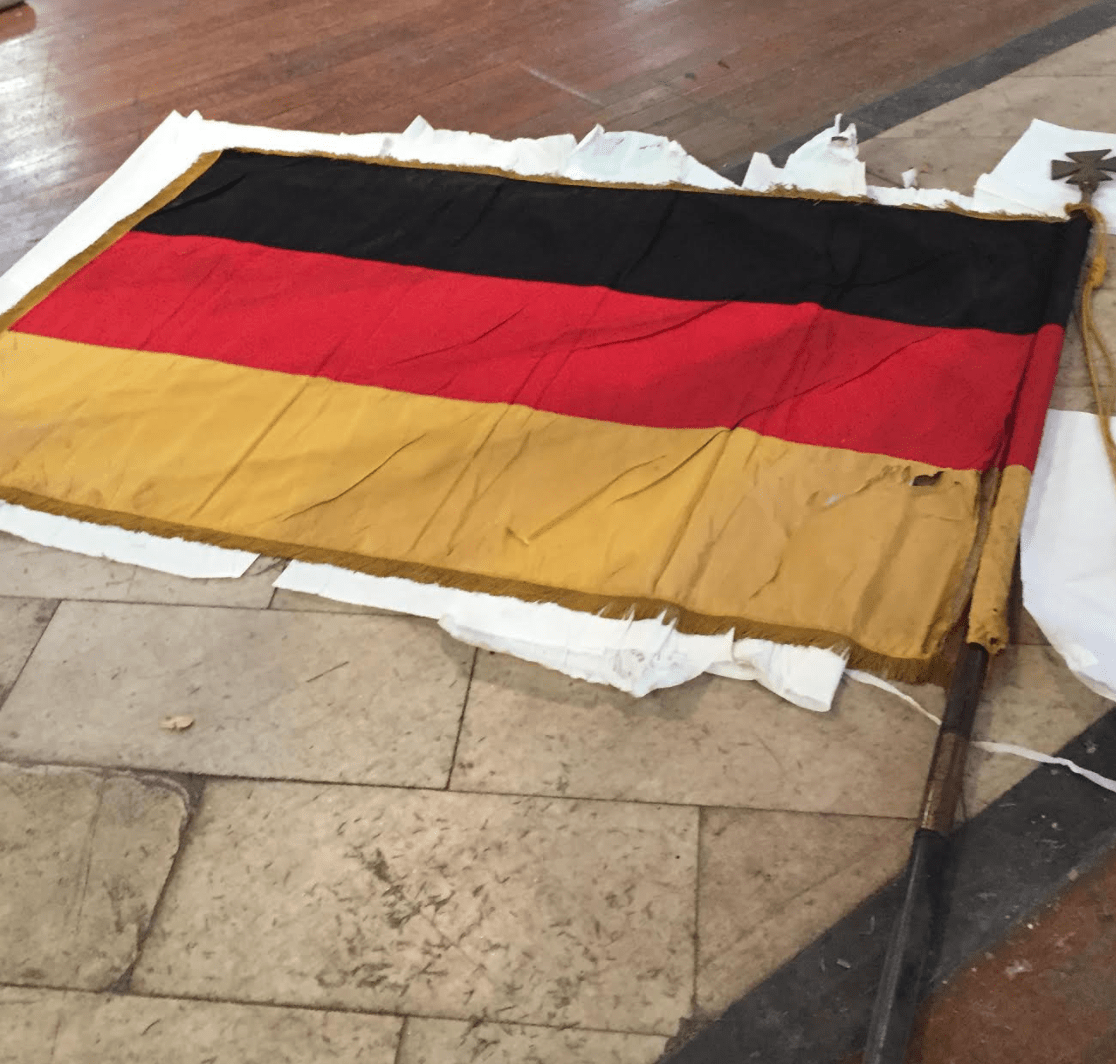
^ The German flag that was given by the Crown Prince of Germany.
At its dedication service, St. Paul’s Church was presented with the flags of the United Kingdom, Belgium, and France by the Consuls of each country. On Columbus Day 1931, the Italian flag was presented by Italy’s Vice Consul.
Four years later, representatives from the Romanian and Yugoslav governments presented their flags to the shrine. And on January 25, 1939, the Warrior Shrine’s collection of World War One Allied combatant flags was completed when Princess Nina of Russia and her husband Prince Paul Chavchadze, representing the Imperial Russian War Veterans, presented their flag along with a shell case taken from the Battle of Galicia in 1914 and a bronze star of St. Andrew.
St. Paul’s Church’s intention in creating the Warrior Shrine was not to honor only the lives of the Allies. On May 16, 1932, the German Consul General presented the flag of Germany to be placed alongside the flags of its wartime enemies. A letter accompanying it came from Prince Wilhelm, the former Crown Prince of Germany and eldest son of Emperor Wilhelm the Second. He commented,
“I, the commander of one of the German armies, see a redeeming feature in your noble act of dedicating at St. Paul’s Church in Hoboken a World War Shrine to perpetuate the world’s indebtedness for the supreme sacrifice of soldiers of all nations.”
Flags were also presented in remembrance of the American war dead. These included the flag of the Naval destroyer U.S.S. Wainwright, which was flown during the first engagement with enemy submarines on June 4, 1917, and the flag of the 4th New Jersey infantry, who fought in both world wars and in the Mexican Punitive Expedition of 1916. There were other items connected to America’s role in the Great War. As already noted, the Rev. Dr. Frank Armstrong had served in World War One and decided to donate the small portable altar and gold chalice that he had used during the war. Upon presenting them he said:
“This is but a small chalice. Many chalices that are presented to the church are studded with precious jewels. This chalice is studded with the lives of men of American youth in the vitality of manhood who gave their lives for the preservation of their country’s ideal. For this chalice hundreds of men received of their God, in many cases for the first and last time.”
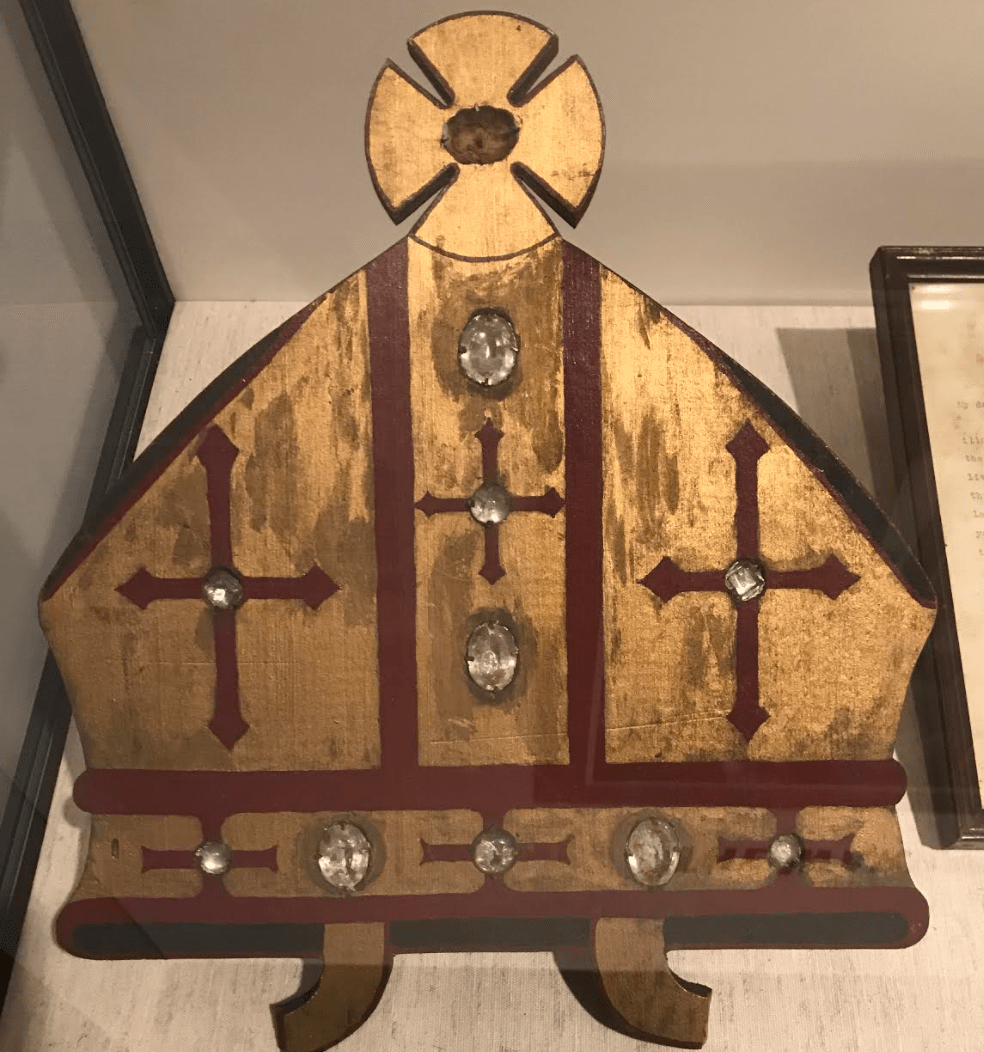
^ A painted wooden Episcopal mitre placed with the memorial
St. Paul’s also went as far as placing portions of “our 8 cemeteries in France, formerly our battlefields” under the floor of the chapel. A large stone from France was also placed in a metal chair, next to the altar. It came from the central bridge at Chateau Thierry, a bridge that was blown up on June 1, 1918, by French troops under the cover of American machine guns. This action formed part of the epic Second Battle of the Marne, a battle that stopped the last major German offensive of the First World War.
Hereditary and patriotic societies also made the Warrior Shrine their home. Other flags included those of the Daughters of the Revolution; the U.S. Daughters of 1812; Sons of the American Revolution; the Society of the War of 1812, the Ladies of the Grand Army of the Republic; and the Sons of Union Veterans.
See More: A Hoboken Walking Tour: A Literal Step Into The Mile Square’s Past
A piece of stone from Westminster Abbey was placed on the floor of the Shrine and was the location where British veterans laid their memorial wreaths. French veterans were honored by a large piece of stone that came from the dungeon in Rouen, France, in which Joan of Arc was imprisoned and from which she was taken to be burned at the stake. This stone was turned into a credence table and placed next to the altar at the Shrine.
From Then To Now
^ The stone taken from the battlefield at Chateau Thierry and placed in the shrine
The Shrine is a cautionary example of what can happen to incredible historical artifacts when a church closes. For over 50 years, as the number of parishioners of St. Paul’s Church gradually diminished, a small band of loyal supporters led by Andrew Scherer, the warden of the church (when the parish could no longer afford a rector), gave their time and resources to preserving the shrine for the numerous local veteran groups and bereaved families that were still visiting the shrine to remember their fallen loved ones. After St. Paul’s merged with two other local parishes, the Warrior Shrine was eventually dismantled and the building was sold.
Today, not much remains of the Warrior Shrine. Several flags still exist in storage but are too fragile to be handled. Its memory was revived recently when All Saints Episcopal Parish, the parish into which St. Paul’s merged, loaned some of the sturdier artifacts to the Hoboken Historical Museum for an exhibit called “World War I Centennial, 1917-2017: Heaven, Hell or Hoboken.”

